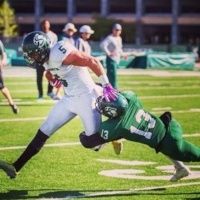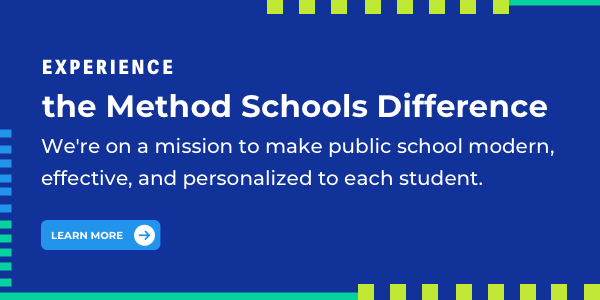A Day in the Life of a Student Athlete
Every student athlete has their own story, but one thing is consistent across the board: Student athletes have a swath of responsibilities to juggle. If you’re eyeing online learning, it’s worth taking a minute to see what’s in store for student athletes in modern high schools.
Wondering what it takes to be a high school student athlete today? In this article, we dive into the day in the life of a student athlete and examine what to expect in an online learning environment.
What does a student athlete’s typical day look like?
Wondering what the typical student athlete has on their plate? Here’s a glimpse into some day-to-day responsibilities high school student athletes juggle:
Practice
To compete at a high level, student athletes have to dedicate time to practice, and that time can add up. In a traditional school setting, student athletes often end up rushing from the school day’s final bell to the practice field, and then scrambling back home for a late dinner.
Training
For student athletes to grow on the field, they need to make extra efforts outside of practice. That includes weight lifting, strength training, and extra skill sessions that reach beyond set practice times.
Meetings with coaches
Student athletes don’t just study in the classroom. They also often need to set aside time to meet with coaches to strategize, analyze films of their game performance, or identify ways to hone skills on the field.
Travel for games
During the season, student athletes often need to travel for hours, if not days, to games and tournaments. Even home games usually require pre-game preparation, field prep, taping sessions, or other additional time commitments.
How much commitment? NCAA surveys suggest athletes who participate in some sports dedicate more than 40 hours per week just to athletics during the season. Of course, most high school athletic programs will be less demanding, but they still require heavy in-season time commitments.
Classes
On top of all of those athletic-focused commitments, student athletes need to attend classes. In a traditional classroom setting, that means squeezing in responsibilities around a set block of school hours.
Meetings with counselors
Students need to make sure they’re on track to graduate. That means crafting recruiting videos, contacting colleges, and making sure they’re meeting requirements that qualify them for college.
Sleeping
Studies show sleep is essential to performance both on the field and in the classroom. For successful student athletes, it isn’t an option to shave extra time out of their schedule from valuable sack time.
Is traditional school right for student athletes?
There was a time when student athletes didn’t have much choice when it came to high school structure. Like it or not, they were stuck working around rigid, brick-and-mortar schooling. Now, with online school becoming the norm, the disadvantages of traditional school have been exposed. Here are a few issues plaguing traditional public schools in the modern age:
- Rigid schedules: With so much activity crammed into a student athlete’s day, time management is essential. Unfortunately, traditional schools force student athletes to squeeze responsibilities in around a strict bell schedule—one that often cuts into crucial sleep patterns.
- Crowded classes: Alarmingly, traditional public schools across the nation are overcrowded. That means student athletes are receiving less in-class attention and fewer opportunities to connect with college recruiters.
- Summer stagnation: Brick-and-mortar schools tend to make it difficult for student athletes to catch up or get ahead outside designated learning times. Unfortunately, that means many aren’t able to learn during the times that are most convenient for their schedules, such as the summer.
What does online learning look like for student athletes?
If you’re eyeing online learning for your student athlete, you’ll want to know what it’s all about before you jump in. Here’s a glimpse at how online learning looks in action:
Flexible schedules
Because online learning is available wherever the student has access to a digital device, they can learn when and where they want. That means they can learn while they’re on the road or spend a few extra minutes catching up on sleep, rather than rushing to get ready for early-morning class.
Self-paced learning
Some online learning programs will provide self-paced learning programs. This coursework adapts to the student’s needs and lets a student athlete advance at their own pace. As a result, student athletes can catch up, use summer programs to get ahead, lift their GPA to meet college requirements, or graduate early.
Targeted learning
Of course, not all online learning programs are equal. However, the best online programs will offer targeted learning for student athletes. These programs dig directly into the student’s needs, help students knock down academic barriers, and pinpoint exactly what the student needs to do to prepare for life after graduation.
Is there extra support for student athletes online?
Wondering if online school automatically gives student athletes an advantage? The answer may be more complicated than you think. Some online programs don’t provide the support student athletes need. Others are specifically designed to lift student athletes up. Here are some key support options that the best online schools will provide for student athletes:
- Experienced advisors: There’s little substitute for having mentors who have been in your shoes. That’s why it’s a big advantage when online schools are staffed with former college athletes who know what it takes for student athletes to succeed.
- NCAA approval: The best online programs will provide coursework that’s aligned with the NCAA. This helps set students up for a smoother transition to post-secondary programs.
- Accreditation: Not all online schools are reputable. For student athletes who want to qualify for college, it’s important to make sure online schools are fully accredited and backed by major regulatory bodies.
- UC A-G alignment: The University of California (UC) sets a high bar for course quality. When an online program offers coursework that’s UC A-G approved, student athletes can have the confidence they’re picking up quality education that will transfer to colleges. It also signals a high standard of coursework credibility to major colleges outside of the UC system.
Take your game to the next level.
At Method Schools, we want to see student athletes succeed. That’s why we provide advanced resources for student athletes, along with trusted coursework and targeted direction.
Want to learn more about how life as a student athlete at Method Schools works? Contact one of our distance learning pros today.




-1.svg)
-1.svg)
.svg)
.svg)
.svg)

.svg)










.svg)
.svg)




